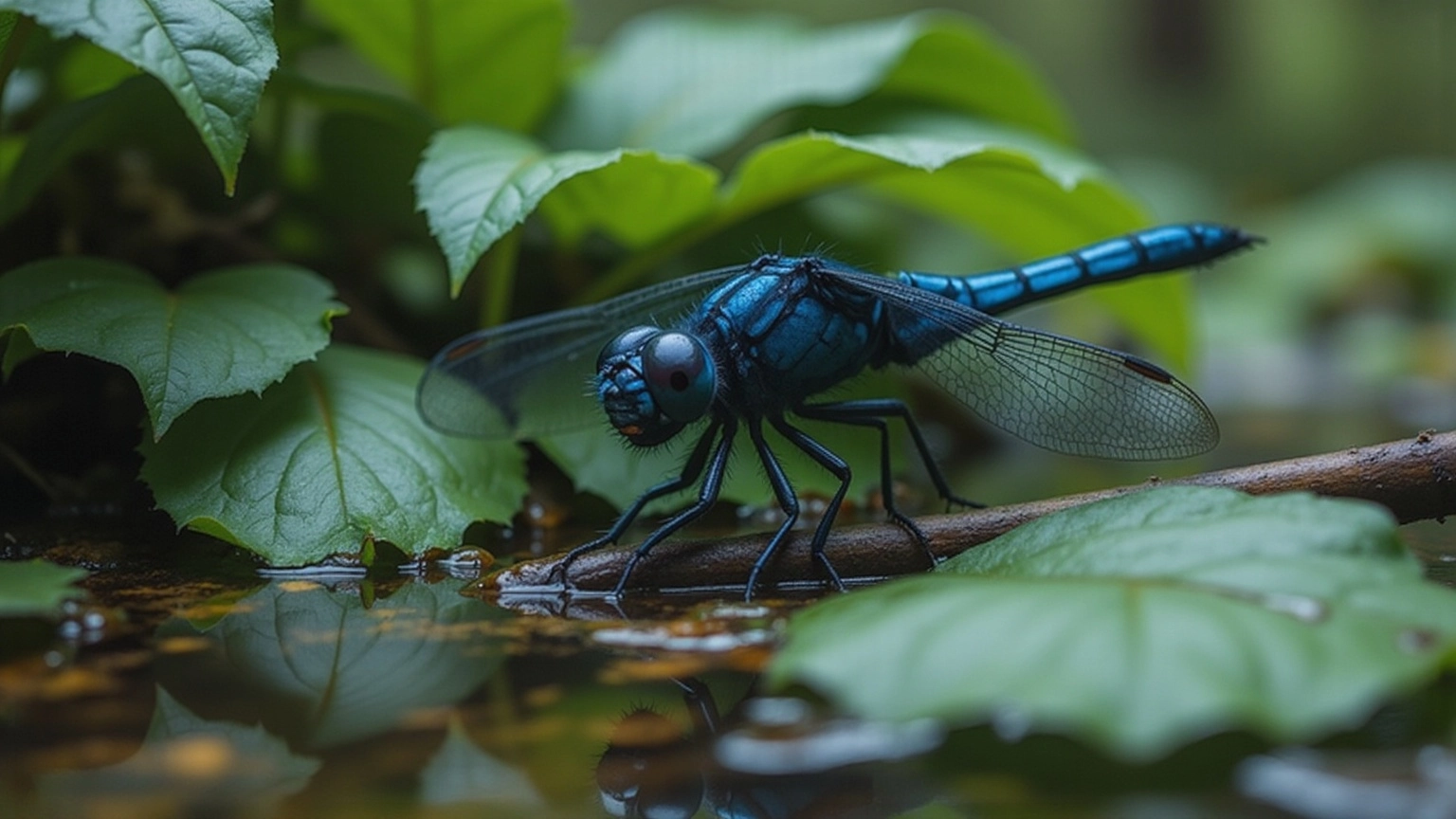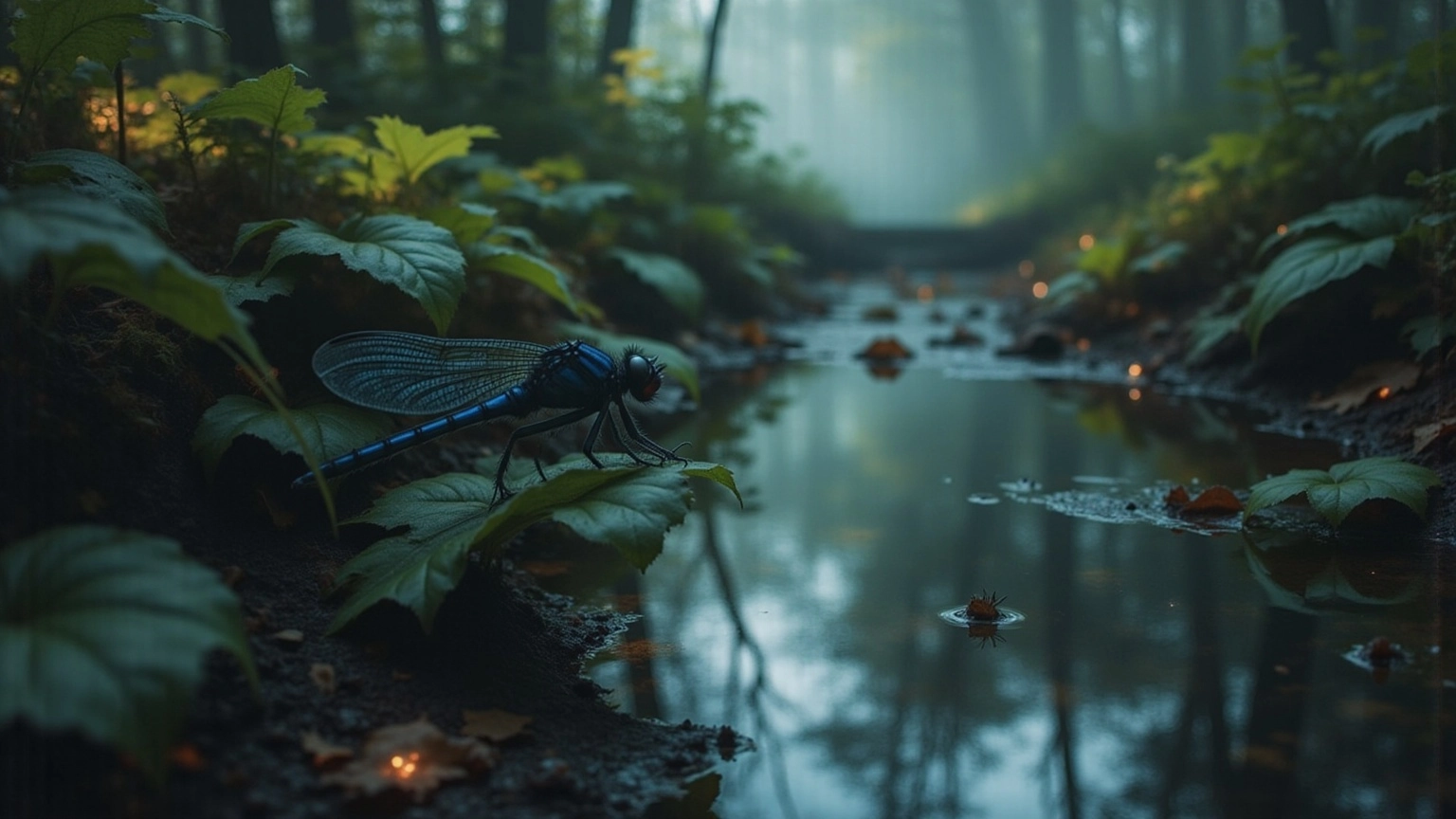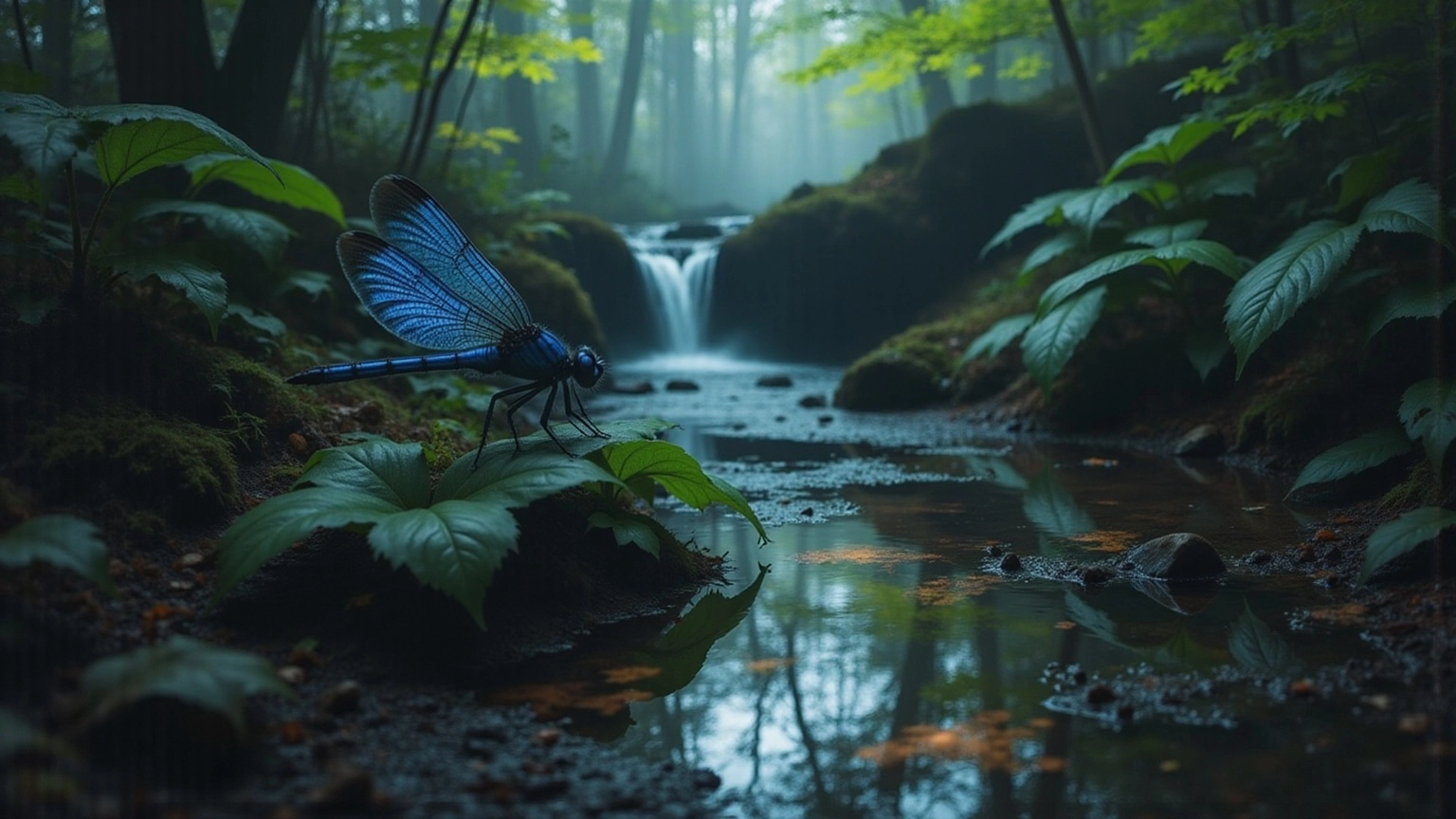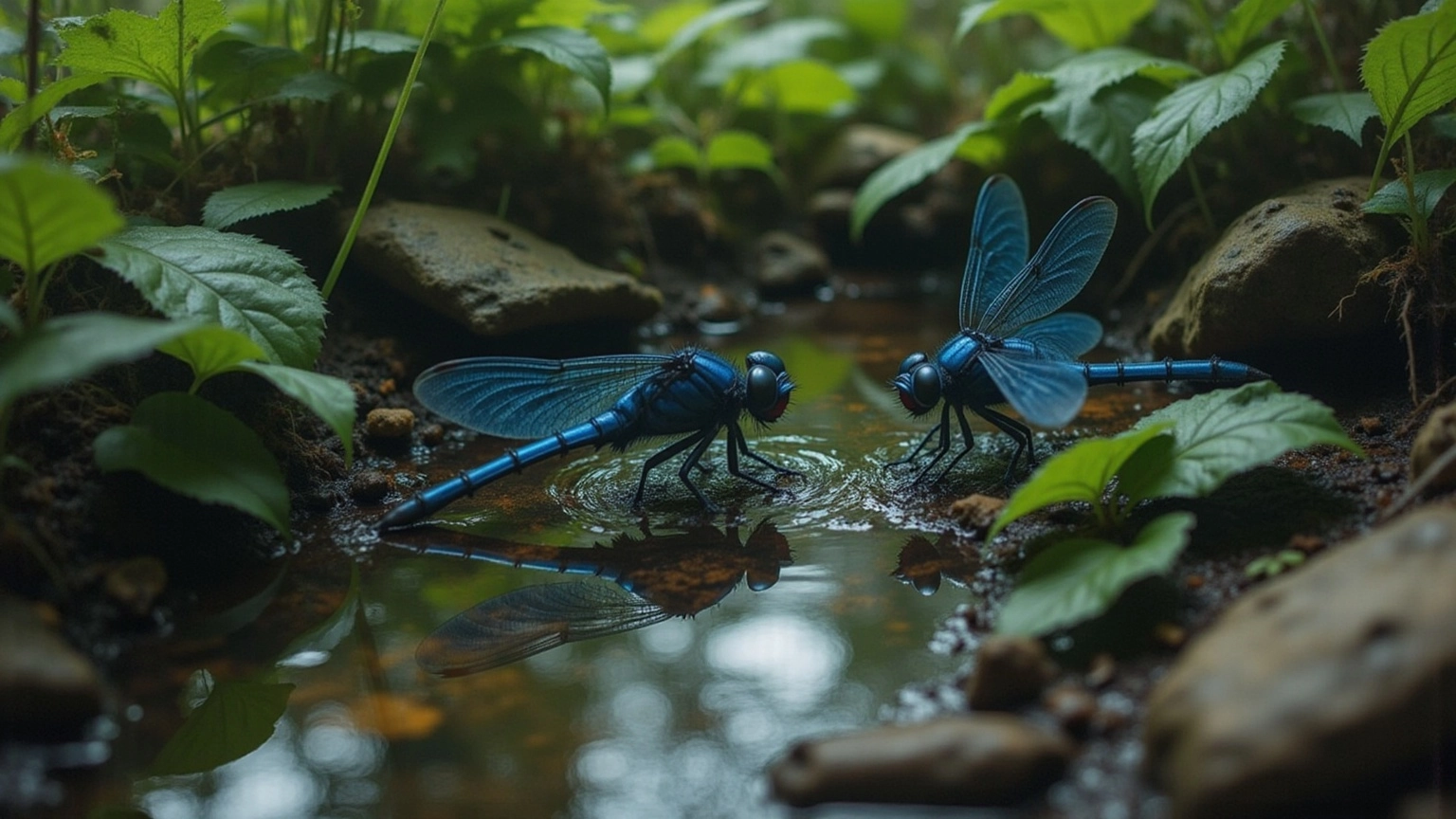
Understanding Blue Dragonfly Meaning: Symbolism and Significance
Share
Overview
The blue dragonfly—an emblem of transformation, spiritual evolution, and adaptability. It whispers a challenge: embrace change, chase personal growth. Dive into cultural beliefs that pulse with life, from Japan to Native American traditions. Here, the blue dragonfly embodies purity, bravery, and the guidance of souls. Its rich symbolic significance cuts through the noise, inviting you to explore the deeper layers of existence. Are you ready to see the world through its shimmering wings?
Introduction
The blue dragonfly—its azure hue striking, its flight agile—does more than catch the eye. It ignites the imagination, a vibrant emblem of transformation and ecological balance. As these remarkable insects dance above tranquil waters, they embody the fragile interplay between beauty and environmental health, serving as crucial bioindicators of aquatic ecosystems.
But wait. The deeper meanings of the blue dragonfly stretch far beyond mere physical presence. Its symbolism weaves through cultures, invoking themes of adaptability, hope, and spiritual evolution. What hidden messages do these enchanting creatures whisper for those daring enough to explore their significance in nature and human culture?
Define the Blue Dragonfly: Characteristics and Habitat
The azure insect—the blue dasher (Pachydiplax longipennis)—is a sight to behold, a vibrant flash of color slicing through the air. These creatures thrive near calm waters—ponds, marshes, lakes—where they zip above the surface, hunting smaller bugs with a fierce elegance. Slender bodies, large multifaceted eyes, and two pairs of wings give them an edge, transforming them into agile predators in the dance of life.
But their presence is more than mere beauty; it’s a pulse check for aquatic health. Azure damselflies depend on pristine water for their life cycle, from aquatic nymph to adult. You’ll find them in abundance where liquid quality reigns supreme, a testament to the necessity of clean environments for their survival. They don’t just exist; they regulate insect populations, maintaining the delicate balance of their ecosystems.
Recent research reveals their sensitivity to water quality shifts, making azure dragonflies exceptional bioindicators. When water quality falters, so do their numbers, a stark reminder of the urgent need for conservation. The azure dasher isn’t just a splash of color in the ecosystem; it’s a crucial player in the grand narrative of ecological balance. Dive deeper into this world, and you’ll uncover the intricate ties that bind life beneath the surface.

Explore Symbolism: Cultural and Spiritual Meanings of the Blue Dragonfly
The blue insect? A fierce emblem of transformation, self-realization, and the blue dragonfly meaning related to spiritual evolution. In cultures like Japan, the blue dragonfly meaning signifies more than just an insect; it represents adaptability and serves as a bold reminder to seize the present moment. Its fleeting life? A stark nudge about life’s transience, pushing you to embrace change and chase personal growth. In Japan, these creatures are more than mere bugs; they’re guardians, especially for infants, keeping pests at bay. This protective vibe elevates them to messengers of hope and renewal.
And that azure hue? It screams tranquility, loyalty, and trust—each shade reinforcing the insect's profound significance. Encountering a blue insect? It’s an invitation to plunge into your inner depths, to embark on a quest for enlightenment. These insects have danced through poetry and art, embodying beauty, nature, and the ever-shifting seasons, particularly autumn. This rich tapestry of symbolism underscores the blue dragonfly meaning as an insect that serves as a guide for those daring enough to pursue a deeper understanding and connection with their spiritual journey.

Investigate Historical Context: Myths and Legends of the Blue Dragonfly
History whispers of the blue insect, often associated with the blue dragonfly meaning, a creature woven into the very fabric of myths and legends. In Native American culture, the blue dragonfly meaning extends beyond being just an insect; it symbolizes purity and joy, serving as a harbinger of good luck and agricultural prosperity. Some tribes believe that the blue dragonfly meaning serves as a messenger, guiding souls from this world to the next. But wait—there’s more. In Japanese folklore, the blue dragonfly meaning symbolizes bravery and power, forever linked to the fierce samurai warriors.
Its mastery over water and air? That’s a testament to adaptability and resilience, a reminder that challenges are merely stepping stones. These narratives don’t just tell a story; they reflect the blue dragonfly meaning in human culture as a symbol of transformation and hope. Dive deeper, and you’ll uncover layers of meaning that resonate through the ages.

Assess Ecological Importance: The Role of Blue Dragonflies in Ecosystems
Blue insects—nature's gothic warriors—are vital players in the aquatic realm, both as relentless hunters and unsuspecting prey. Their insatiable hunger for mosquitoes and other small insects transforms them into fierce natural pest controllers, slashing mosquito populations with ruthless efficiency. Picture this: a single nymph of a dragonfly or damselfly devours an average of 40 mosquito larvae each day. That’s a staggering 45% drop in larval numbers, a predatory ballet that preserves the delicate balance of local ecosystems while safeguarding public health from disease vectors.
But azure insects don’t just hunt; they herald purity and vitality in our waters. Thriving in pristine habitats, they embody the essence of ecological health. Their lifecycle dances through aquatic ecosystems, where they linger in water during their formative stages, rendering them sensitive to shifts in water quality and habitat degradation. And let’s not forget their role in the food chain—these insects are a vital feast for birds and other predators, underscoring their importance in the circle of life.
Recognizing the ecological significance of blue dragonfly meaning reveals their dual nature: symbols of transformation and pillars of biodiversity. They control insect populations while serving as indicators of habitat quality, a stark reminder of our duty to protect these extraordinary creatures and their ecosystems. This mirrors the ethos of Darc Arts, where the beauty of nature intertwines with the gothic aesthetic, inviting us to embrace the allure of the wild while indulging in the calming embrace of THCA.

Conclusion
The blue dragonfly—an emblem of transformation, resilience, and the intricate dance of ecosystems. Its vibrant presence doesn’t just dazzle; it screams of life’s interconnected web. Grasp the essence of this creature, and you’re not just seeing an insect; you’re tapping into a spiritual guide and an ecological sentinel, beckoning you to forge a deeper bond with nature and yourself.
Dive into the depths of the blue dragonfly’s multifaceted existence. It’s more than a predator or a bioindicator; it’s a cultural icon, rich with meanings that span societies. This creature embodies adaptability and the raw beauty of change. Historical tales weave a tapestry of purity, bravery, and hope, amplifying its significance in human culture.
Embrace what the blue dragonfly teaches—commit to preserving our natural realms and nurturing personal growth. As these creatures glide through water and air, they challenge you to reflect on your journey, urging you to seek enlightenment and connection. This isn’t just an insect; it’s a vivid reminder of life’s beauty and fragility. Protect the ecosystems that cradle us, and let the blue dragonfly inspire your evolution.
Frequently Asked Questions
What is the blue dragonfly scientifically known as?
The blue dragonfly is scientifically known as the blue dasher (Pachydiplax longipennis).
Where do blue dashers typically thrive?
Blue dashers thrive near calm waters such as ponds, marshes, and lakes.
What are the physical characteristics of blue dashers?
Blue dashers have slender bodies, large multifaceted eyes, and two pairs of wings, which make them agile predators.
Why are blue dashers important for the ecosystem?
Blue dashers help regulate insect populations and are bioindicators of aquatic health, indicating the quality of water in their habitats.
How do blue dashers respond to changes in water quality?
Blue dashers are sensitive to shifts in water quality; their populations decline when water quality deteriorates, highlighting the need for conservation efforts.
What role do blue dashers play in the life cycle of aquatic ecosystems?
Blue dashers depend on clean water for their life cycle, from aquatic nymph to adult, and their presence reflects the health of their environment.
